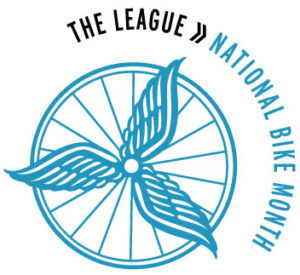 Ride Smart
Ride Smart
A car hits a cyclist. The first inclination of any of us that share the passion of cycling is to blame the driver. In truth, some of the accidents can be blamed on the motorist; on the phone, texting, driving blind into the sun, in a hurry to get to a meeting. But regardless of who is at fault, many of these accidents could be avoided by taking some simple precautions to make the driver take notice.
Although there are always those individual drivers that demonstrate aggressive behavior, and this can result in accident and injury - the vast majority of motor vehicle drivers are not out to hurt a cyclist. You as a cyclist, must give yourself every opportunity to be seen. Remember, just because you CAN ride in a certain way or CAN be on a certain road, doesn't make it the smart thing to do.
You wouldn't ride your bike on I-635, the Dallas North Tollway or US75, but we constantly see cyclists on roads just as dangerous, including certain sections of Preston Rd, Custer Rd and the service roads of the interstates and tollways. Ride Smart and select your routes carefully - just because you CAN, doesn't mean you SHOULD. In a car bike collision, the bike loses every time.
Although there is a need for laws like the Safe Passing Law that has been passed by the Texas Legislature in 2009 (subsequently vetoed by then Governor Perry), there's no substitute for good sense.
Tail lights
This is one piece of equipment that I see so many cyclists ignore, especially with a daytime ride. Get yourself a bright tail light and use it at all times. One that flashes or pulses is best, anything that might catch a drivers eye. Even if you think there's only a slight chance it will help, isn't it worth the effort to give you a better opportunity to be seen?
Head lights
Always use a head light at night. That seems to be common sense - and it's the law. It's also advised that you use one during the day, if riding by yourself in a heavy traffic area. This provides additional visibility to cars coming out of cross streets or turning left in front of you.
Light colored clothing
As a general rule light and bright colored clothing is a good choice for a cyclist on the road.
Use a Mirror
Especially when riding alone, the use of a mirror to see traffic approaching from the rear is a great safety device. If you can tell that an approaching car may not be either slowing or changing lanes to go around you, the mirror gives you a little extra time to make evasive maneuvers. These come in a variety of forms, including attachment to the end of your handlebar or to the side of your helmet, or attached to your sunglasses. All work extremely well and can give you that much needed reaction time.
Lane positioning
Follow the one, best rule when cycling on the road - "ride as if you're invisible". Riding close to the curb may seem like the thing to do, getting out of the way of fast drivers, but it doesn't fall under "Riding Smart" for several reasons.
- Debris gathers in this area and forces you to either power through it and possibly crashing or, swerving into traffic to avoid it. In the second option, this is an unexpected action and could result in you being hit and injured - or worse.
- Riding close to the curb is an invitation for motorists to pass you in your lane. Even with a safe passing law in place, anxious drivers and heavy traffic make for an environment where people take chances.
On a two lane road (one lane each way), ride approximately 3 ft from the right side of the road. On a multi-lane road, you have the right to take the right lane - do it - ride toward the middle of the lane. In both cases, you make yourself more visible to traffic and demonstrate your intention to be a part of the traffic flow.
STRAVA
KOMs are fun, but you're still on the streets. Do not compete for a KOM that requires you to break the law (running stop signs, riding more than two abreast, etc.).
Smart routes
A few tips when picking a route for your next ride or commute.
- Avoid riding into a rising or setting sun. Many bicycle-car collisions happen when a cyclist is riding directly into the sun and the driver of a motor vehicle, blinded by the sun, impacts the cyclist from the rear.
- Avoid riding on very busy streets.
- Avoid sections of road that provide no escape route (eg. Two lane roads with high curbs). Depending on the ability to "bunny hop" a side curb is not Riding Smart.
- Avoid routes where your presence on the road will unnecessarily impede the flow of traffic, especially where you could select an alternate route. Share the Road is a two way street.
- Avoid groups that take unsafe routes. Only you are responsible for your safety.
Sum it up
Don't be invisible, but ride like you are.
Pick your routes carefully.
A bicycle loses a collision with a car - EVERY TIME!
Ride Smart - and enjoy the rest of National Bike Month!
